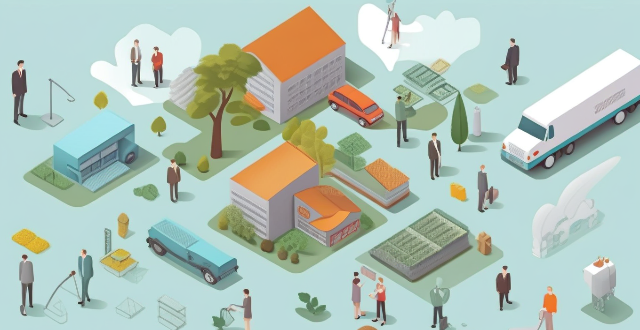Climate change has far-reaching economic impacts on various industries and sectors. These impacts can be direct, such as damage to physical assets or production processes, or indirect, such as changes in consumer behavior or market demand. Key areas where the economic effects of climate change are most pronounced include agriculture, energy, tourism, insurance, manufacturing, and finance. Both direct and indirect impacts must be considered when assessing the overall economic implications of a changing climate. It is crucial for businesses, governments, and societies at large to develop strategies that not only mitigate these impacts but also build resilience against future climate shocks.

Economic Impacts of Climate Change on Different Industries and Sectors
Climate change has far-reaching economic impacts on various industries and sectors. These impacts can be direct, such as damage to physical assets or production processes, or indirect, such as changes in consumer behavior or market demand. Here are some key areas where the economic effects of climate change are most pronounced:
Agriculture
Direct Impacts
- Crop Yields: Changes in temperature and precipitation patterns can reduce crop yields, affecting food security and farmer incomes.
- Livestock Health: Extreme weather events can lead to heat stress or disease outbreaks among livestock.
Indirect Impacts
- Input Costs: Rising temperatures may increase irrigation needs and the cost of agricultural inputs like fertilizers.
- Commodity Prices: Fluctuations in global harvests due to climate change can affect commodity prices, with potential ripple effects through supply chains.
Energy
Direct Impacts
- Energy Production: Extreme weather can disrupt energy infrastructure, leading to power outages and reduced productivity.
- Renewable Energy: Wind and solar energy generation can be affected by changes in weather patterns.
Indirect Impacts
- Energy Demand: Warmer temperatures can increase the demand for cooling services, while colder temperatures can increase heating demands.
- Investment Risks: Uncertainty over future climate policies can deter investment in fossil fuel industries.
Tourism
Direct Impacts
- Natural Disasters: Coastal tourism destinations can be damaged by storm surges and sea level rise.
- Seasonality Changes: Altered weather patterns can affect tourist preferences and travel plans.
Indirect Impacts
- Tourist Perception: Concerns over environmental degradation can influence tourist choices and destination marketing strategies.
- Infrastructure Adaptation: Investments in climate-resilient infrastructure may be necessary to maintain tourism revenue streams.
Insurance
Direct Impacts
- Increased Claims: More frequent and severe weather events lead to higher insurance payouts for property damage and business interruptions.
- Underwriting Challenges: Assessing risk becomes more difficult as climate patterns shift unpredictably.
Indirect Impacts
- Premium Adjustments: To account for increased risks, insurers may raise premiums or limit coverage in certain areas.
- Catalyst for Innovation: The need to manage climate-related risks drives innovation in products like parametric insurance.
Manufacturing
Direct Impacts
- Supply Chain Disruptions: Extreme weather can disrupt transportation networks, affecting just-in-time manufacturing processes.
- Operational Costs: Changes in temperature and humidity levels can affect energy consumption and production efficiency.
Indirect Impacts
- Resource Scarcity: Droughts or floods can limit access to water resources critical for industrial processes.
- Regulatory Compliance: New environmental regulations may impose additional costs on manufacturers to reduce emissions or improve resource efficiency.
Finance
Direct Impacts
- Asset Devaluation: Real estate and other assets located in areas vulnerable to climate risks may see reduced values.
- Financial Market Volatility: Uncertainty about climate impacts can introduce volatility into financial markets.
Indirect Impacts
- Investor Scrutiny: Investors are increasingly scrutinizing companies' exposure to climate risks and their adaptation strategies.
- Green Finance: There is growing interest in green bonds and other financial instruments that support climate action projects.
In conclusion, climate change poses significant economic challenges across various industries and sectors. Both direct and indirect impacts must be considered when assessing the overall economic implications of a changing climate. It is crucial for businesses, governments, and societies at large to develop strategies that not only mitigate these impacts but also build resilience against future climate shocks.